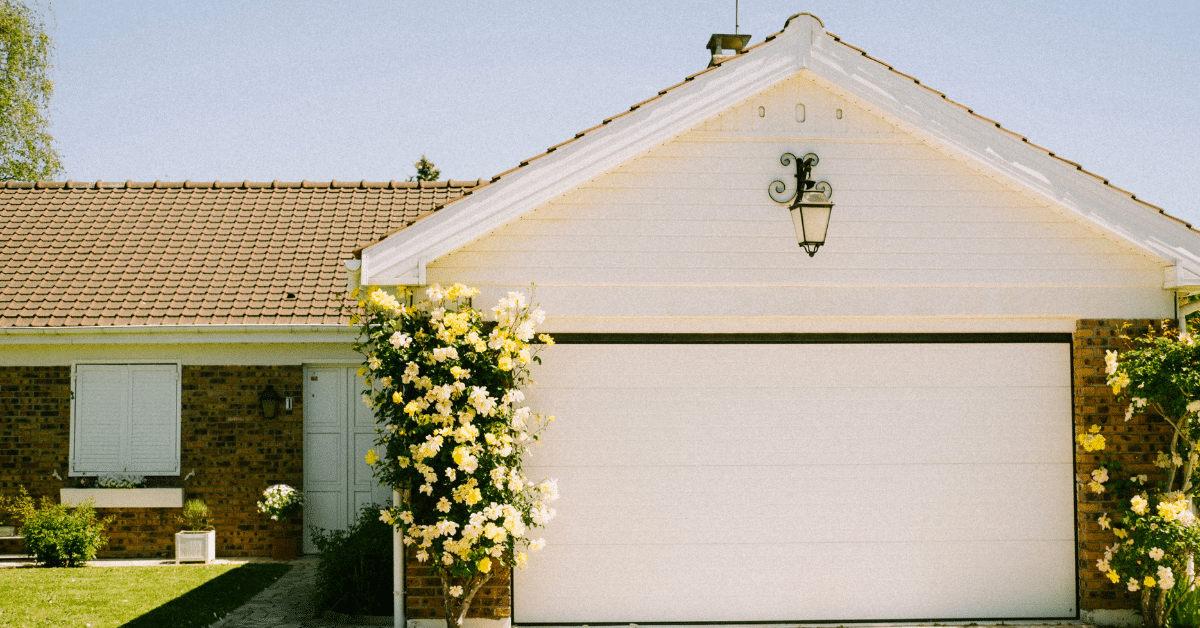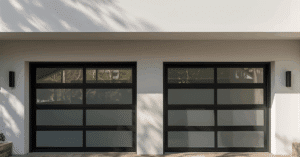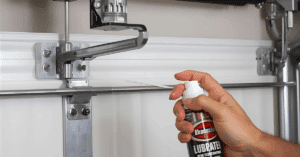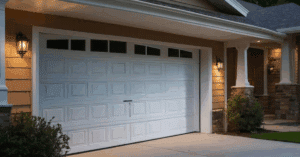Replacing your garage door is a major investment, and knowing what to look for when replacing a garage door helps you make a confident, long-lasting decision. Whether you want better security, improved insulation, or a modern appearance, understanding key factors ensures you choose a door that suits your home, climate, and budget. This guide explains everything you need to evaluate before making the upgrade.
Why Knowing What to Look for Matters
Choosing the right garage door affects your home’s appearance, security, and even energy bills. A well-selected door provides better protection, smooth operation, and increased property value. Transitioning from an older, worn-out door to a new, efficient one becomes easier when you know what to look for when replacing a garage door.
Material Options to Consider
The material you choose determines durability, maintenance needs, and overall cost. Understanding what to look for when replacing a garage door starts with selecting the right material.
Steel Garage Doors
Steel is one of the most popular options because it is durable, low-maintenance, and available in insulated versions. It’s ideal for busy families or homeowners who prefer long-term reliability.
Wood Garage Doors
Wood doors offer a classic, elegant appearance, but they require regular maintenance. If aesthetics matter most and you are willing to maintain it, wood remains a timeless choice.
Aluminum Garage Doors
Aluminum is lightweight and resistant to rust, making it perfect for humid climates. It gives a sleek, contemporary look that complements modern homes.
Composite Doors
Composite materials mimic the beauty of wood while offering the strength of steel. They are durable, low-maintenance, and stylish.
Insulation and Energy Efficiency
If you’re unsure what to look for when replacing a garage door, insulation should be high on your list—especially if your garage is attached to your house.
- Insulation Types: Understanding insulation helps you control indoor temperature and reduce energy costs.
- Polystyrene Insulation: Budget-friendly and effective for mild climates. It adds basic thermal resistance and reduces noise.
- Polyurethane Insulation: Offers superior insulation and structural strength. Polyurethane-insulated doors are ideal for extreme temperatures.
- R-Value Importance: The R-value tells you how well the door insulates. Higher R-values mean better energy efficiency. For attached garages, choose a door with an R-value of at least 10–12.
Safety and Security Features
One core aspect of what to look for when replacing a garage door is safety.
- Pinch-Resistant Panels: These prevent fingers from getting caught between panels—important for homes with children.
- Tamper-Resistant Hardware: This makes it harder for intruders to alter or break into the system.
- Auto-Reverse Mechanism: Modern garage doors must include sensors that stop and reverse the door if they detect an obstruction.
- Smart Security Features: Newer garage doors offer app-based control, activity alerts, and remote monitoring for extra peace of mind.
Design, Style, and Curb Appeal
Your garage door often makes up 30–40% of your home’s exterior. Making the right design choice is essential.
- Panel Styles: You can choose from carriage-style, modern flush designs, raised panels, and more. Match the door with your home’s architectural style.
- Colors and Finishes: Modern doors come in a wide range of colors, including wood-grain and custom paint options.
- Window Inserts: Adding windows improves natural light and enhances the door’s appearance.
Cost, Warranty, and Installation
Understanding what to look for when replacing a garage door also involves knowing the financial and logistical side.
- Cost: Prices vary based on material, insulation, size, and design. Mid-range steel doors are generally most budget-friendly.
- Warranty: Always check what the manufacturer covers—panels, hardware, insulation, and paint finish. Longer warranties often reflect better quality.
- Professional Installation: Improper installation affects safety and performance. Always hire certified garage door installers to ensure smooth, secure operation.
Maintenance Requirements
Different materials demand different levels of upkeep. Steel and composite doors need minimal care, while wood requires staining or painting. Make sure you choose a material that fits your maintenance comfort level.
Conclusion
Knowing what to look for when replacing a garage door helps you choose a door that enhances your home’s appearance, safety, and efficiency. Evaluate material options, insulation, security features, design elements, and long-term maintenance before making your decision. With the right information, replacing your garage door becomes a smart investment that improves comfort and increases home value.
FAQs
Q1. How long does a garage door replacement take?
A: Most professional installations are completed within 3–4 hours.
Q2. What is the most durable garage door material?
A: Steel is highly durable, low-maintenance, and long-lasting.
Q3. Should I choose an insulated garage door?
A: Yes, especially if the garage is attached to your home or you live in extreme climates.
A4. How often should I maintain my garage door?
A: Basic maintenance every 6–12 months keeps your door running smoothly.
Q5. Are smart garage doors worth it?
A: Yes, they offer remote access, improved security, and real-time monitoring.





